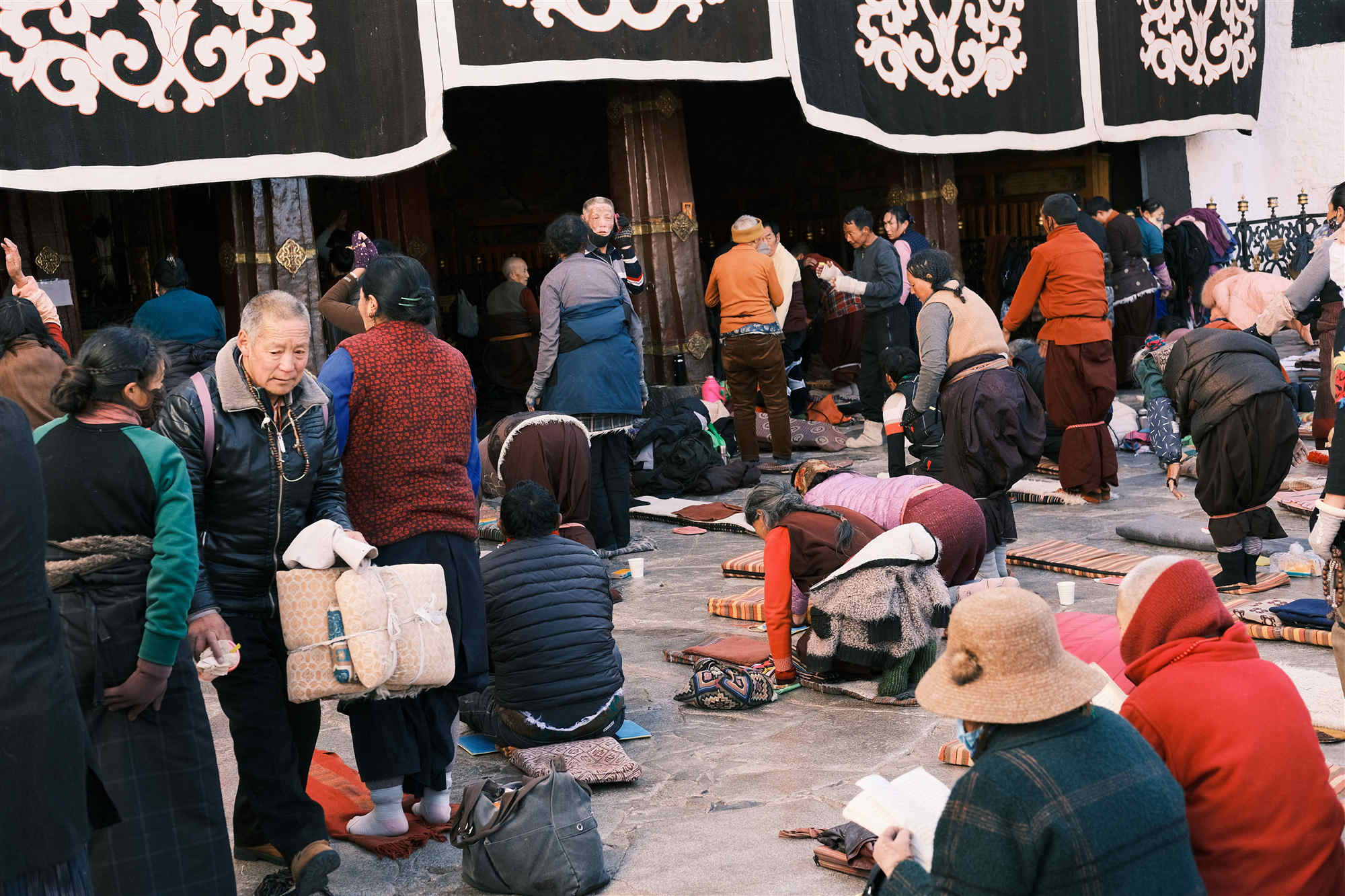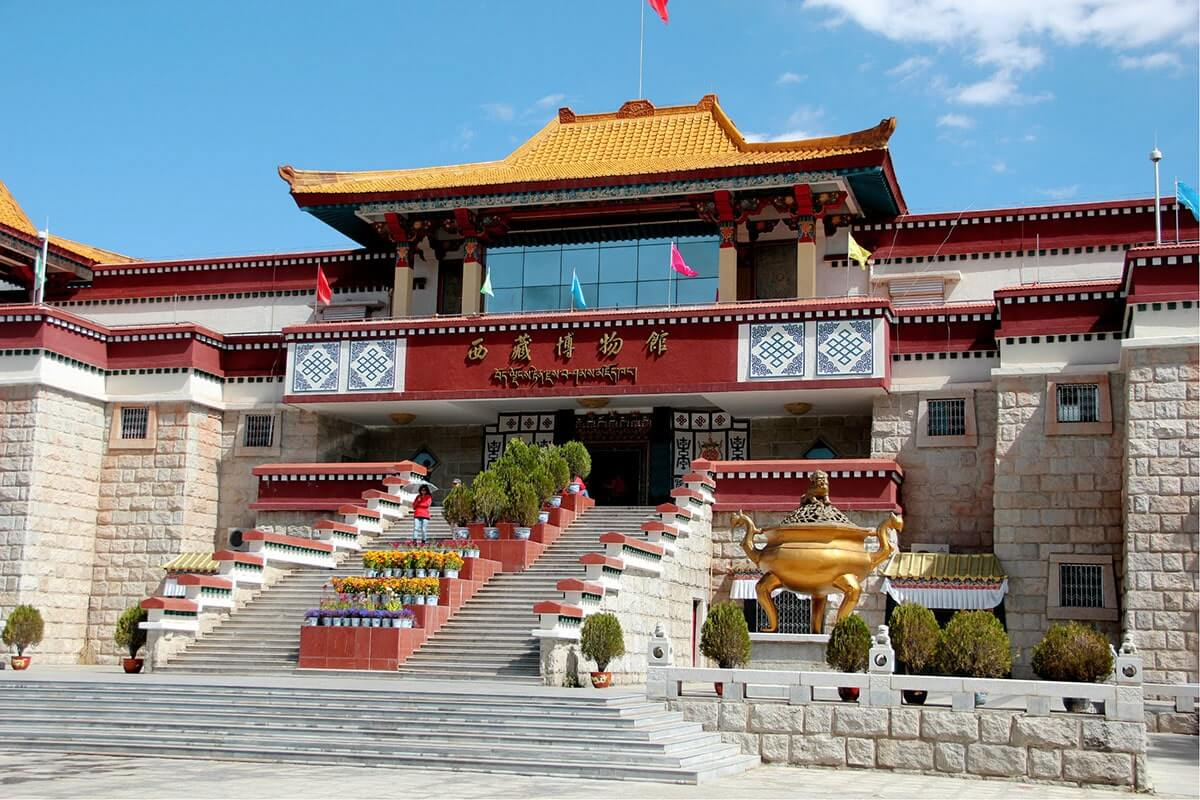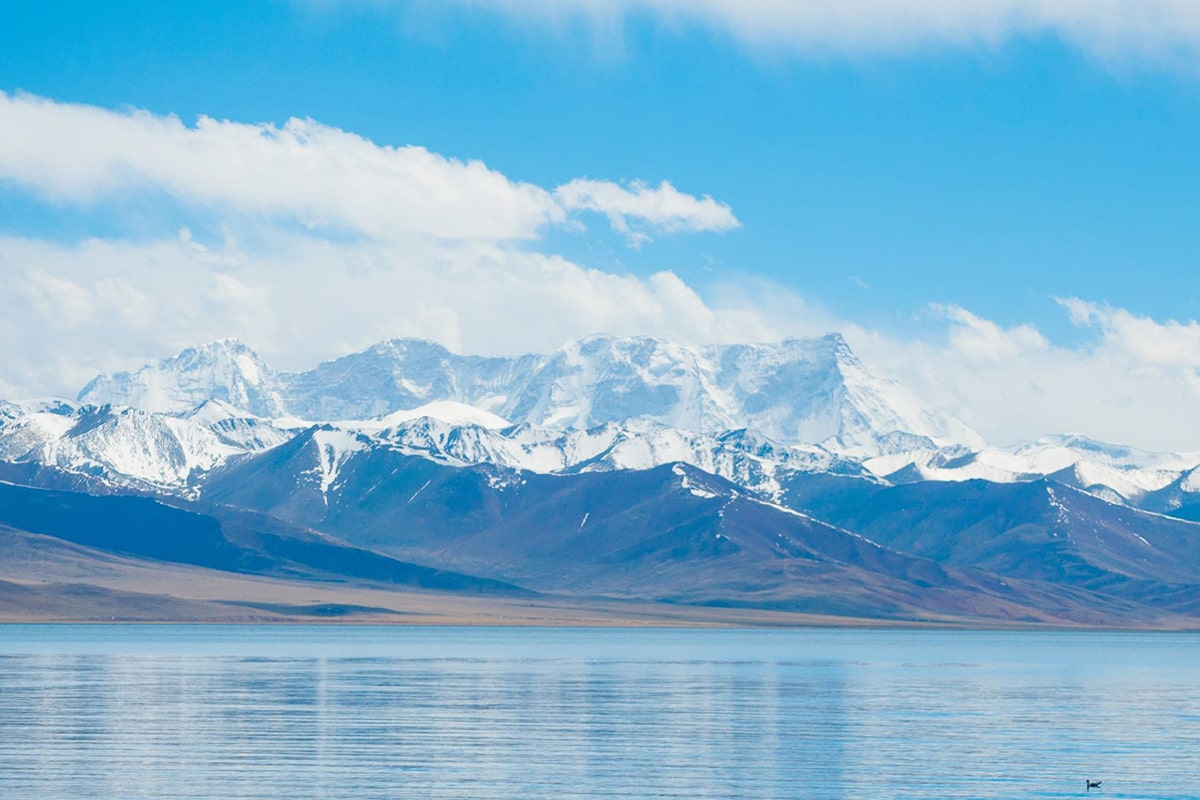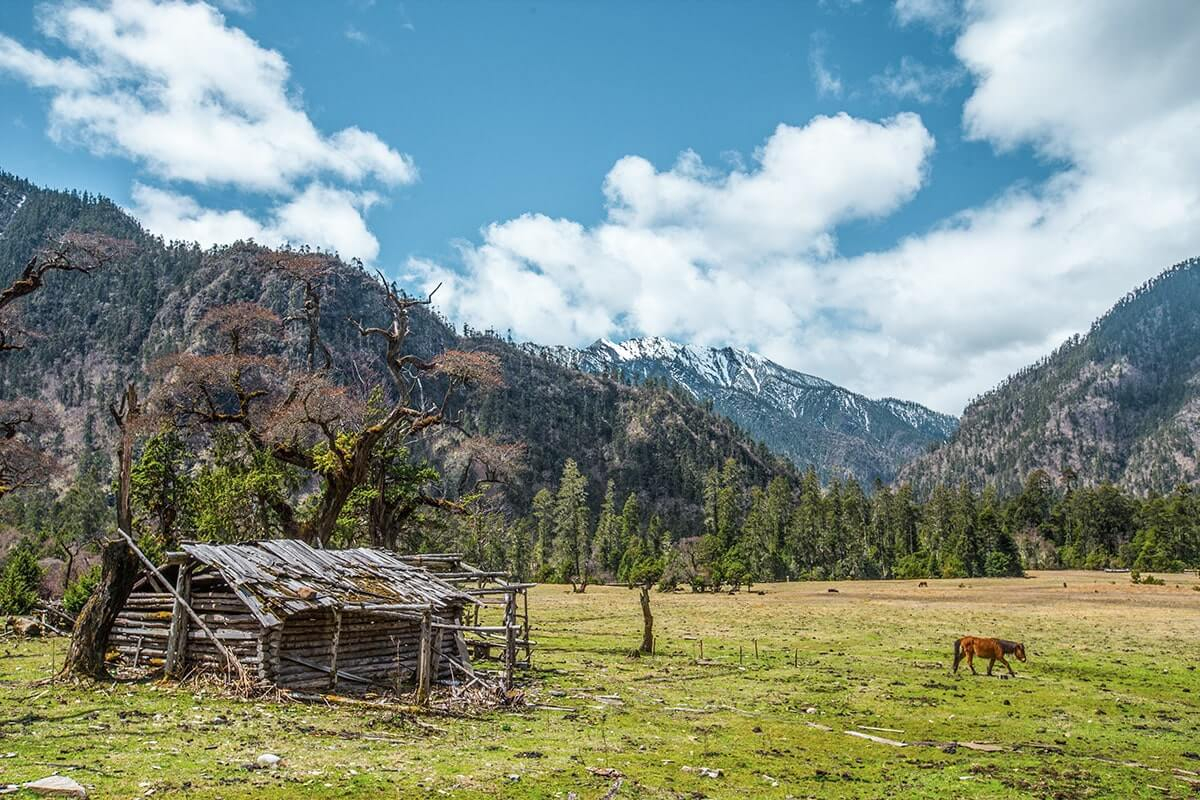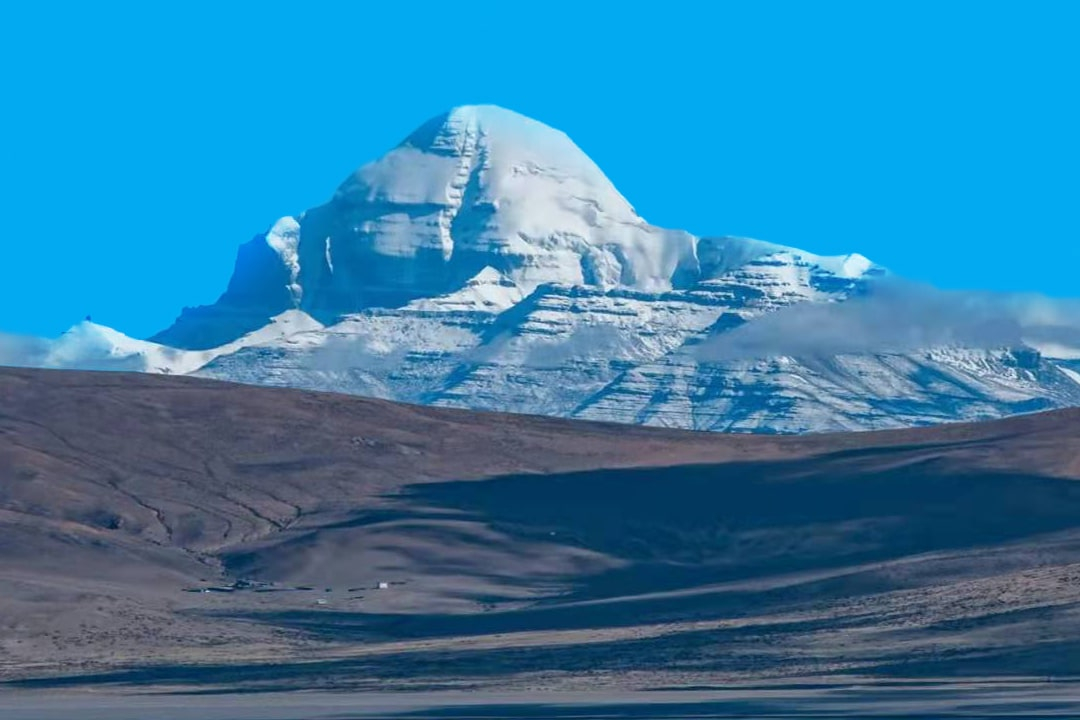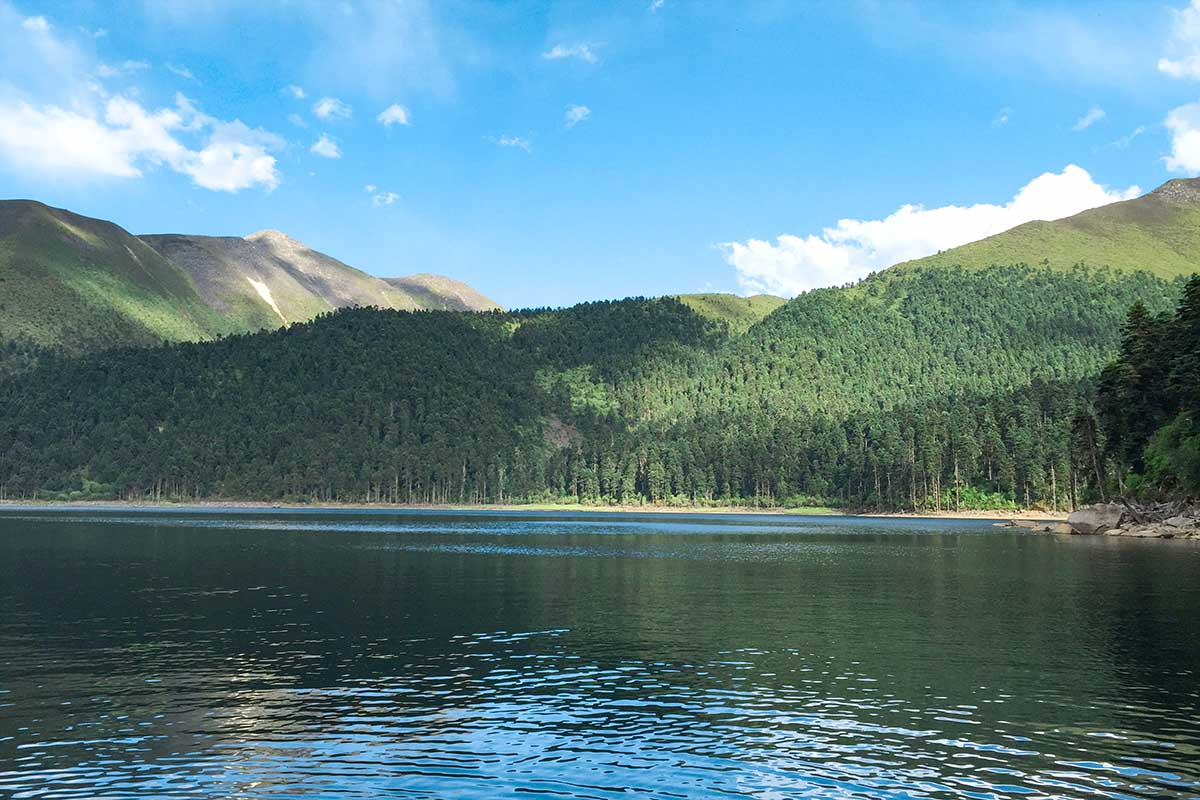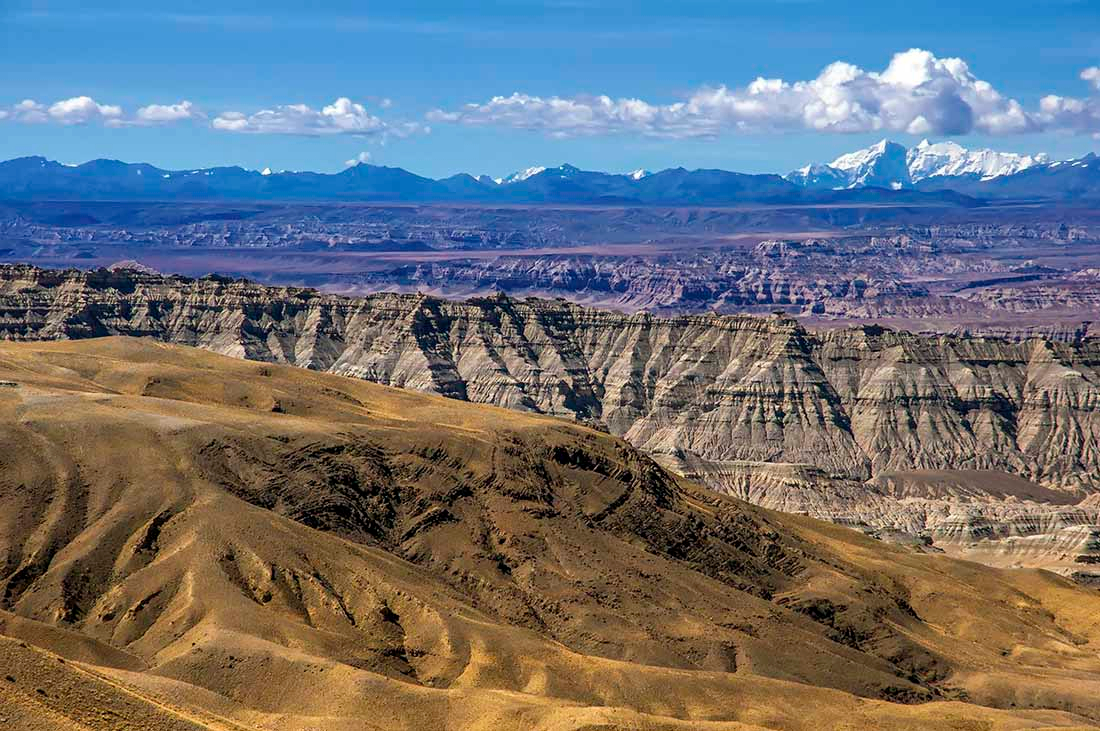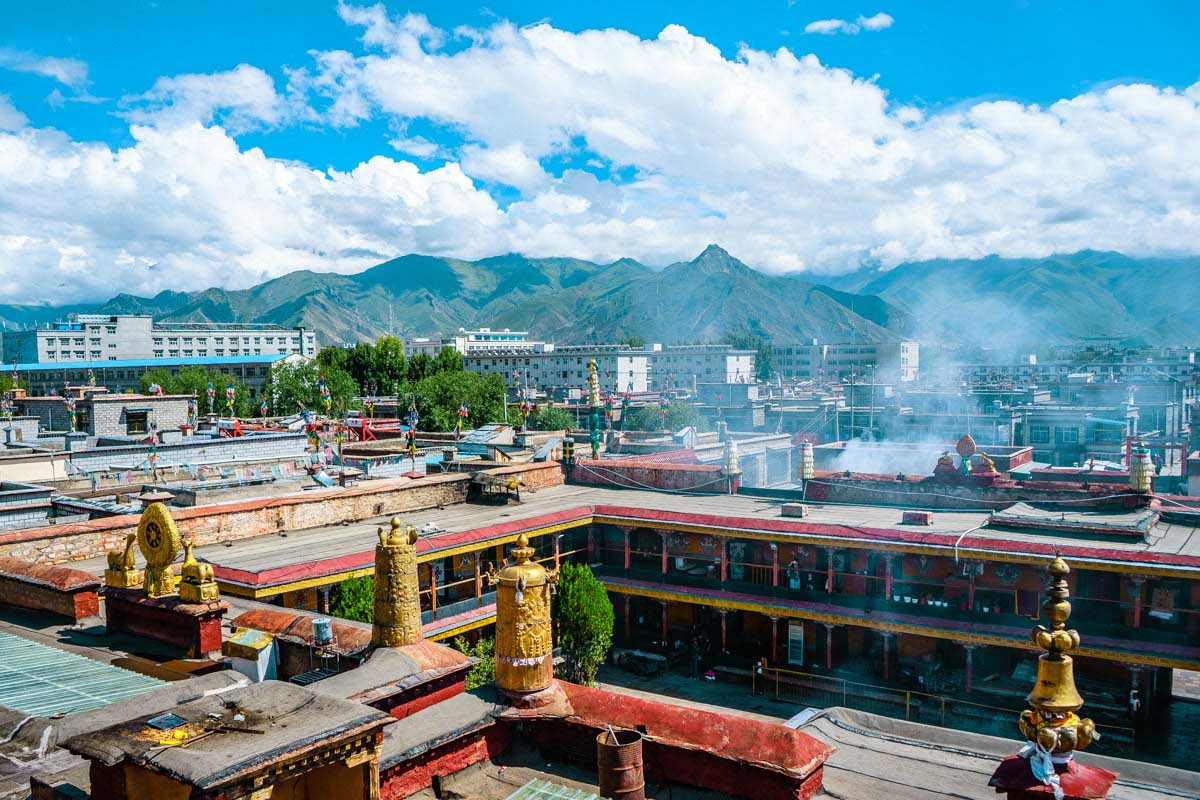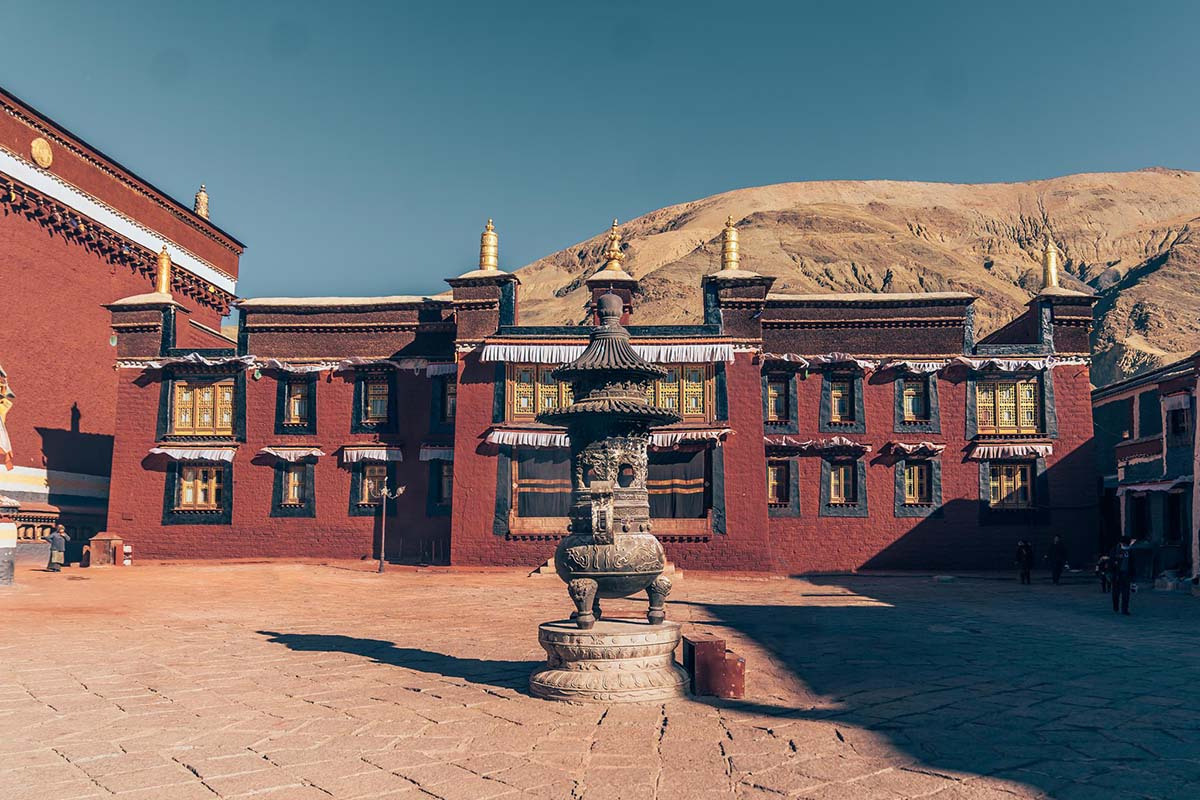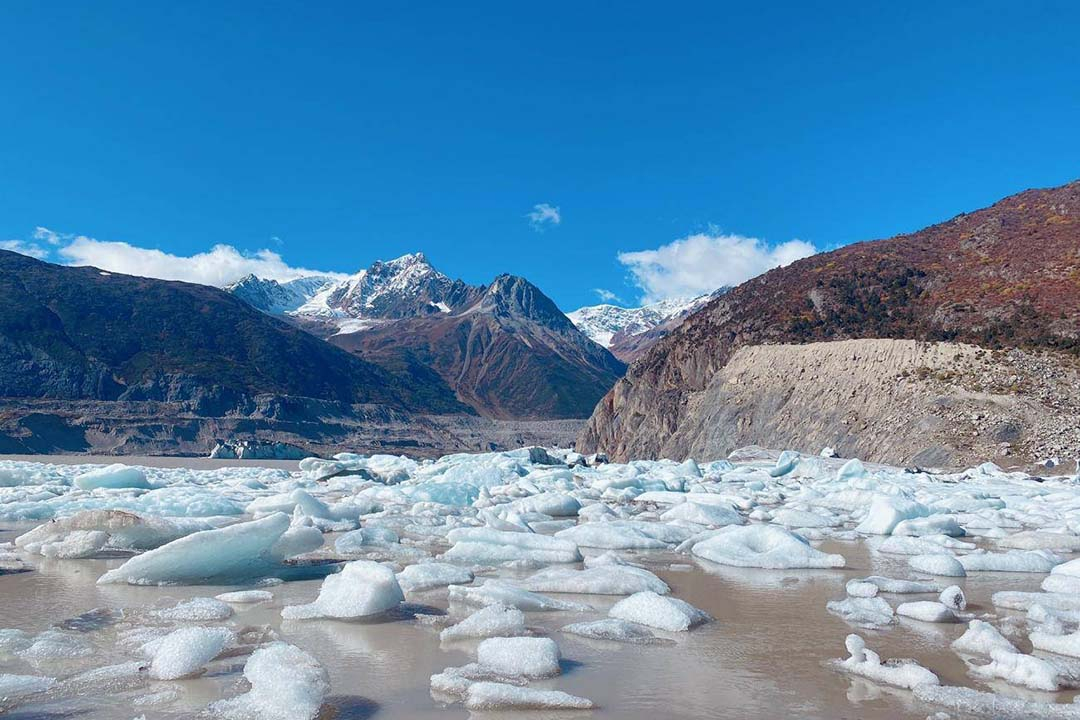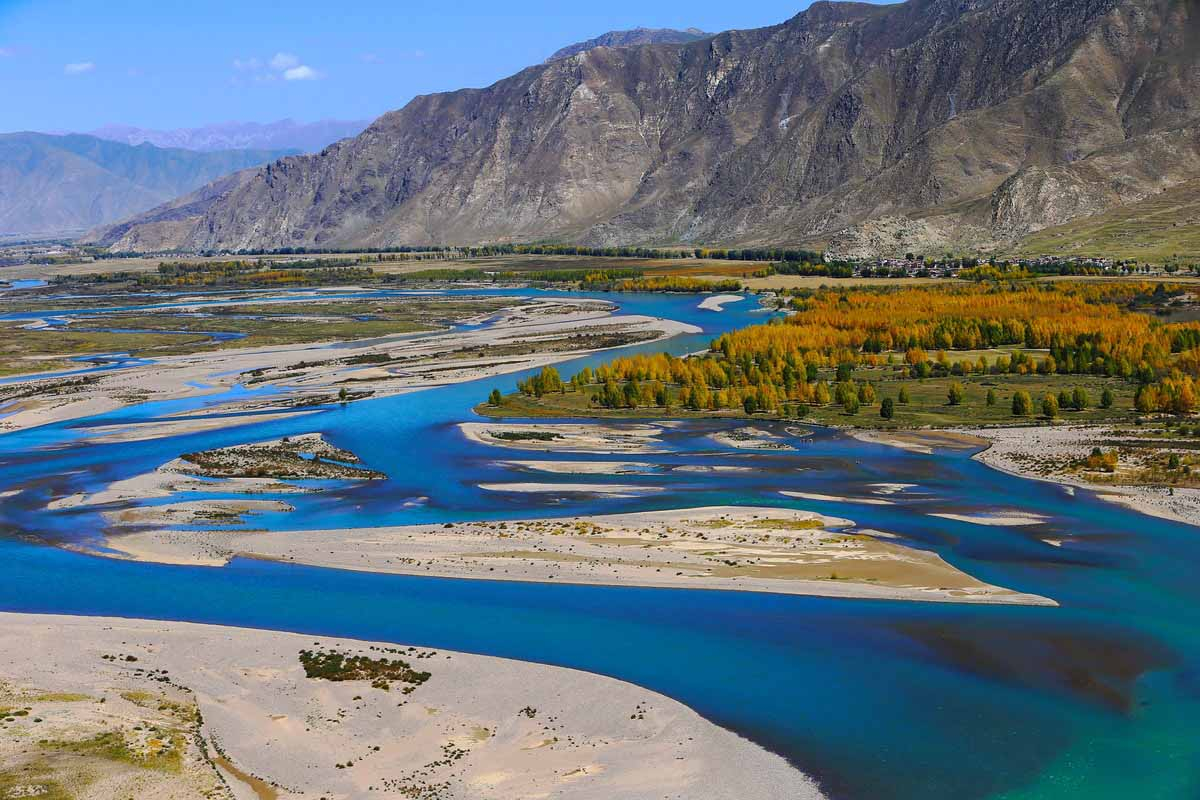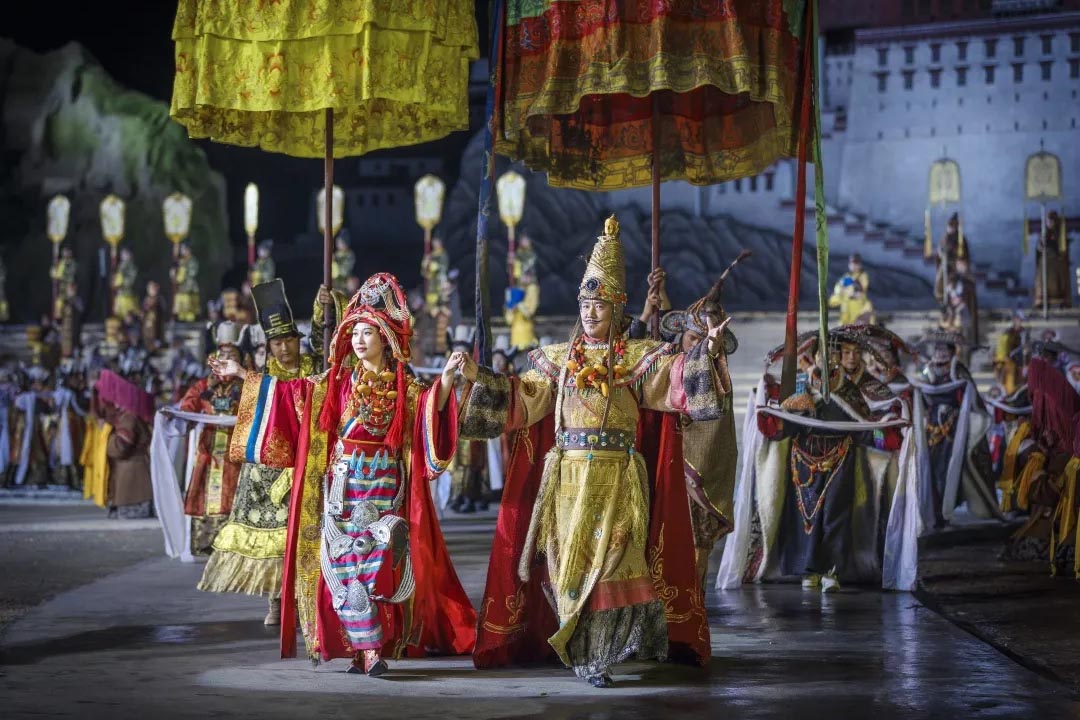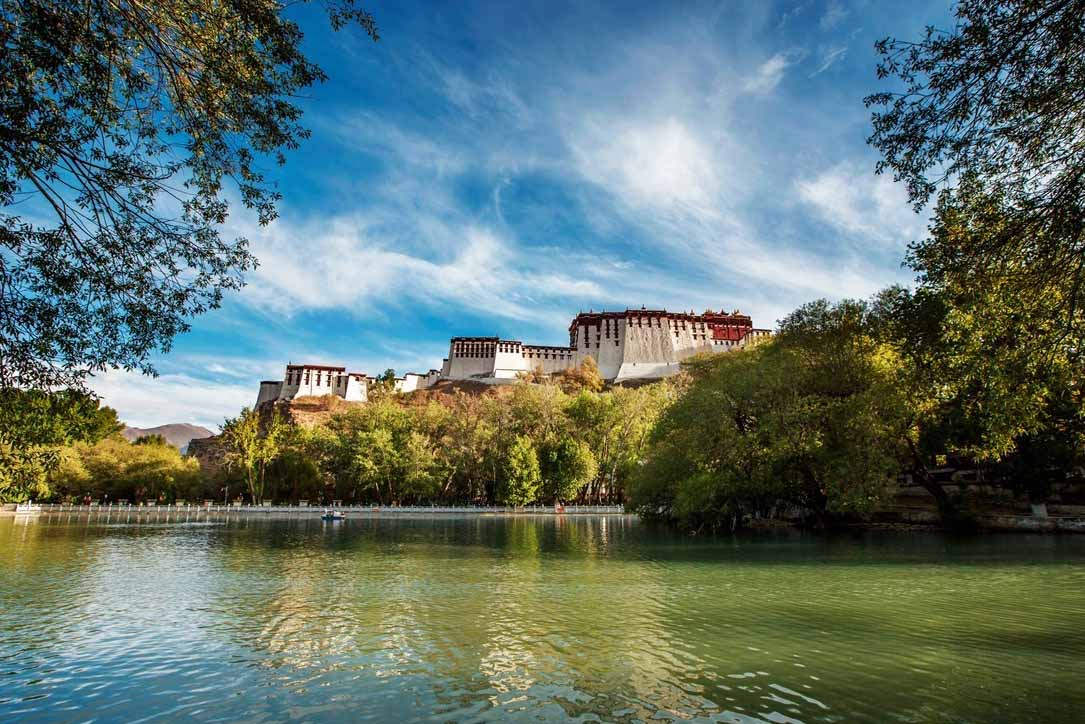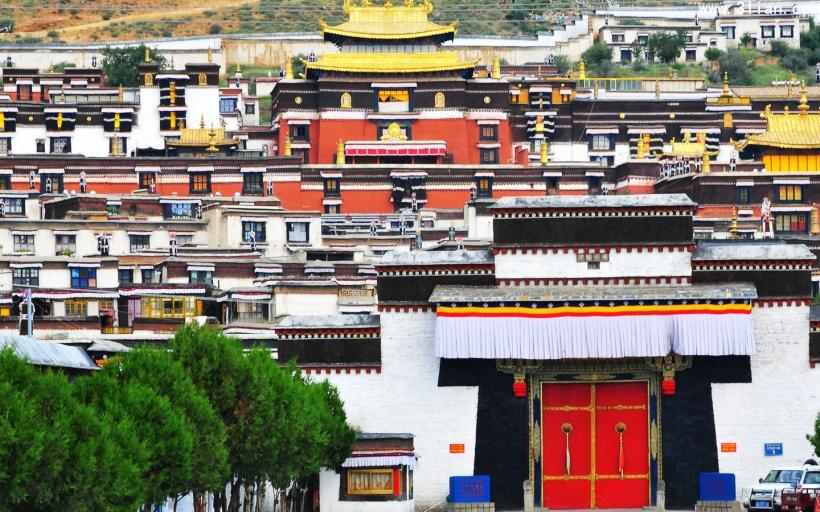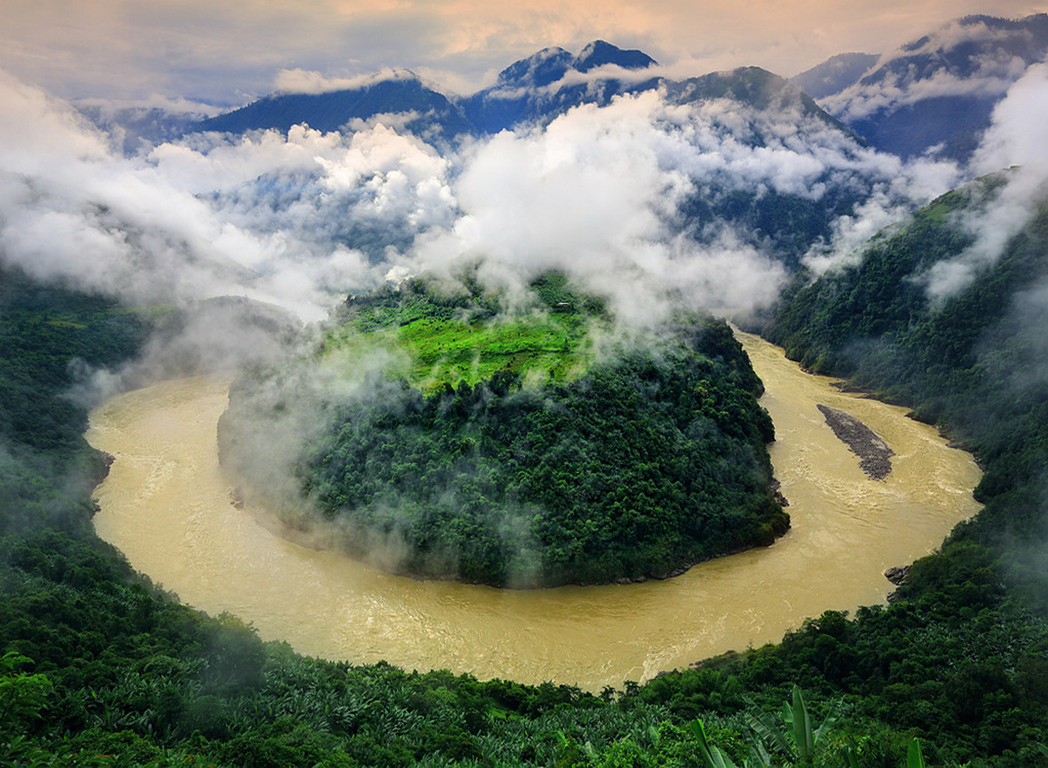Jokhang Monastery
Chinese name: 大昭寺 (Da Zhao Si)
Location: Barkhor Street, Cheng Guan District, Lhasa, Tibet.
Ticket: Entrance ticket CNY85.00
Estimated tour time:: 1-2 hours
Recommended time to visit: All year round.
Nearby attractions: Sera Monastery, Barkhor Street, Potala Palace, Norbulingka Palace, etc.
Located in the center of the ancient city of Lhasa, the Jokhang Monastery was built in the seventh century by Songtsan gambo, the Tang princess Wen Cheng and Nepalese Princess Bhrikuti. After repeated expansion in the ensuing centuries, the monastery is now a combination of large buildings covering an area of 25,100 square meters.It is a Buddhist hall for Tibetan Buddhists and a symbol of unity between the Tibetan and Han peoples.
Jokhang Monastery is the spiritual center of Tibet and the holiest destination for all Tibetan pilgrims. It is listed in the World Cultural Heritages with Potala Palace and Norbulingka. Situated at the heart of the old town of Lhasa and surrounded by Barkhor Street, Its four-story main building demonstrates a combination of the Han, Tibetan, Indian and Nepalese architectural styles, as well as a mandala world outlook of Buddhism. With the Hall of Amitayus Sutra as its center, the monastery symbolizes the nuclear of the universe. The Hall of Sakyamuni is the essence of the monastery.It was originally called the 'Tsuklakang' (Tsulag Khang) - 'House of Religious Science' or 'House of Wisdom' during the Bon period of Tibet, which is referred to geomancy, astrology, and divination of Bon. Today it is more commonly known as the Jokhang, which means the 'House of the Buddha'. Visiting Jokhang Temple for a real discovery tour in the mysterious and sacred land, you can get close to the religious part of Tibet and experience the devotion of Tibetans.
● History of Jokhang Monastery
Jokhang Monastery is one of the most important sites in Tibetan Buddhism, and dates back to the early years of Buddhism in Tibet. The story starts around 641 CE, when the ruler who had unified Tibet, Songstan Gambo, made an agreement with the ruler of China's Tang Dynasty, Emperor Taizong. As a symbol of their improved political relationship, Taizong sent his daughter, Princess Wencheng, to be Songstan Gambo's bride.
Princess Wencheng arrived at a time when various disasters had been rocking Tibet. According to tradition, she was gifted in astrology and ordered a Buddhist temple to be built in order to drive away demons. In other versions of the story, Songstan Gambo decided to build a temple in order to house a very important Buddhist relic that the princess had brought as her dowry. Either way, the site chosen for the temple was a lake.
Over years, workers brought buckets of sand and dirt up the hill to fill the lake so the temple could be built. The locals started calling the place ''Rasa,'' which means ''Land of goats.'' This name later became Lhasa.
When the temple was finally completed later in the 640s, it was named Jokhang, meaning ''House of Buddha.'' Archaeological studies suggest that the original temple contained eight rooms of religious images. It became a very important site in spreading Tibetan Buddhism, particularly against the native Bon religion.
The temple was expanded again and again over time, now containing literally hundreds of thousands of sacred carvings, relics, and statues. Today, it is an extremely important religious and cultural center and a revered site in the history of Tibetan architecture. Among the features that are hard to miss is a roof made of gold.
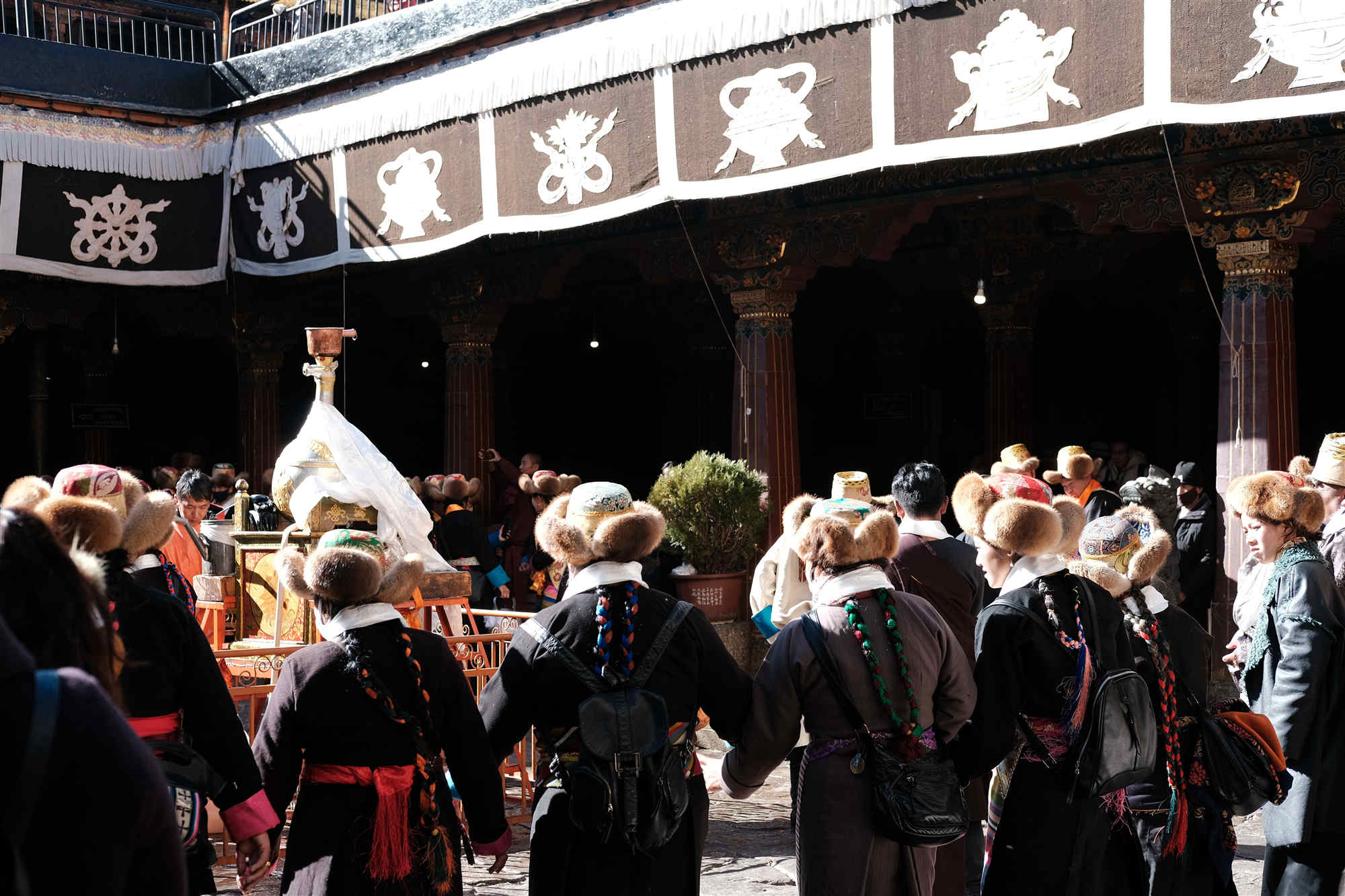
● What to See at Jokhang Monastery
Tourists can only tour Jokhang Monastery in the afternoon; the morning is reserved for pilgrims. The best way to experience the Monastery is to arrive at 8am to watch the pilgrims perform their devotions, then visit the interior in the afternoon. The temple is relatively quiet then, save for the presence of Chinese student tour guides.
Standing four stories tall and covering an area of about 25,000 square meters in the heart of Lhasa, Jokhang Temple combines local Tibetan elements with influences from Nepal, China and India. In the front is a large plaza and open porch, which is usually filled with prostrate Tibetan pilgrims.
The exterior of the temple is decorated with deer and wheel motifs, early symbols of Buddhism. Both represent the Buddha's first sermon, in which he "turned the wheel of the Dharma" in a deer park near Varanasi, India.
Jokhang's interior is a dark and atmospheric labyrinth of chapels dedicated to various gods and bodhisattvas, illuminated by votive candles and thick with the smoke of incense. Although some of the temple has been rebuilt, original elements remain: the wooden beams and rafters have been shown by carbon dating to be original; the Newari door frames, columns and finials date from the 7th and 8th centuries.
The main cloister is ringed with large prayer wheels, kept spinning throughout the day by pilgrims. The cloister leads to the central hall, which contains Jokhang Temple's star attraction: the Jowo Rinpoche (or Jowo Shakyamuni) This life-sized (5 foot/1.5m) statue of the Buddha at age 12 is the holiest object in Tibet. Probably originating in India, it was brought to Lhasa as part of the Chinese Princess Wencheng's dowry in 641. The richly gilded and bejeweled image is flanked by altars of King Songtsen Gampo and his two wives, who together introduced Buddhism into Tibet.
The third floor contains an image of Palden Lhamo, fierce protector of both Lhasa and the Dalai Lama. She is said to have murdered her own child to bring her husband to his senses and put an end to his endless military campaigns. The roof is accessible and provides fine views over the temple, the Barkhor path and the Potala Palace.
A chapel on the south side of the complex contains more recent yab-yum images of sexual union. Many mistakenly believe tantric practice has no place in the "reformed" Geluk School, but Tsongkapa simply restated the principle that only advanced practitioners should engage in tantric sex.
- HOTEST
- RECOMMEND
